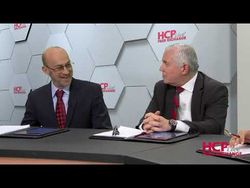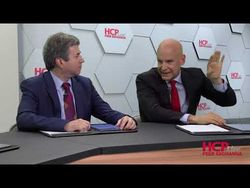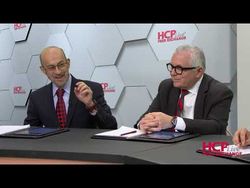Reducing Risk in Cardiovascular Events - Episode 14
Ongoing Research in Treating Hypercholesterolemia
Deepak L. Bhatt, MD, MPH: What about inclisiran? Any thoughts about that drug?
Christie M. Ballantyne, MD: It’s very exciting. We’ll be hearing a lot more about it at this meeting. But it will be a paradigm shift if you could give 1 injection twice a year.
Deepak L. Bhatt, MD, MPH: It’s a PCSK9 inhibitor, by the way.
Christie M. Ballantyne, MD: Fifty percent LDL [low-density lipoprotein] reductions with a small RNA molecule—that would be very exciting. We need to get, of course, the safety data, and there’s an outcomes trial in progress. But once again, as Steve points out, we have more options. I think the issue for blood pressure and diabetes is there are lots of options and combination therapies that are used, and we’ve made a lot of progress there. There’s a long way to go in lipids to do the same thing.
James A. Underberg, MD, MS: One of the interesting things about inclisiran, which Sripal Bangalore, our friend, has published a bit on, is this concept of LDL variability. If you give a long-acting agent, where that area under the curve comes down to a lower level than short-acting medications, might there be some incremental benefit beyond just the LDL effect itself? That also speaks to the idea of adherence, right? That even adherence in a twice-a-year injection should improve. And so there are a lot of potential benefits. We don’t really know how it’s going to pan out, but it’s a fascinating option for a therapeutic class that we know already works.
Steven E. Nissen MD: Do you know when it comes up for FDA approval?
Christie M. Ballantyne, MD: The filing for the NDA [new drug application] is going to be occurring shortly.
Steven E. Nissen, MD: So it would be a 9-month PDUFA [Prescription Drug User Fee Act] date. This is not too far off in the future that the FDA will get to make a decision.
Deepak L. Bhatt, MD, MPH: No, that’s why I think it’s important for our audience to at least have heard about these things. There’s a lot coming down the pike. Well, it looks as though we’ve got to wrap things up. It’s been a great conversation. Any final comments? I’m just going to work my way down. Christie?
Christie M. Ballantyne, MD: Cardiovascular disease is still the major cause of pain and suffering and death in our country. We could prevent, I think, 80% if we start earlier. Assess the risk and be aggressive. Lifestyle and pharmacotherapy when needed.
Michael Miller, MD: Just to add to that, if you go to countries where heart disease is very rare, you find, generally speaking, low LDL in a physiological range. These individuals are living at levels in the 40-, 50-, 60-, 70-, 80-mg/dL range with low triglycerides. Blood pressure is usually under pretty good control, nonsmoking, low risk of diabetes. So the natural selection in countries that have physiological levels don’t get coronary disease, or it’s very rare. It stands to reason that if we could shape our population through lifestyle and our therapies to keep these levels down, our risk would be lower.
James A. Underberg, MD, MS: As the internist on the panel, I want to reiterate what Steve started with, which is the importance of primary care, primary prevention, starting early. Actually, for women who may decide to have a period of time when they have children, start early before that actually happens, because there may be a period of time where you can’t treat. Again, treat across the lifetime. I think that’s the key thing to remember.
Steven E. Nissen, MD: I have very little to add except to say that I’ll say it again: you can’t be too rich, too thin, or have too-low LDL. Don’t be complacent. Get LDLs down. We’ve got lots of tools in the tool chest. We didn’t have very many years ago. Use all the tools, and get patients where they need to be.
Deepak L. Bhatt, MD, MPH: Can’t be too rich, too thin. How about the triglycerides? Does that fit in there too?
Steven E. Nissen, MD: Well, you know, we may need to add that now. I mean, as things are evolving, I’ll have to think about modifying that aphorism to include the issue. I think we’ve had a good discussion about this. We’re just entering the era now where triglycerides become a much more interesting target for therapy.
Deepak L. Bhatt, MD, MPH: Yeah, I agree. And it’s fun that we’re doing it together. All right. Well, it’s been a fantastic discussion. Thank you to the faculty, first of all, for this wonderful exchange of ideas. On behalf of our panel, we thank you, the audience, for joining us. We hope you found this Peer Exchange discussion to be useful and informative. Thank you so much.
Transcript edited for clarity.



